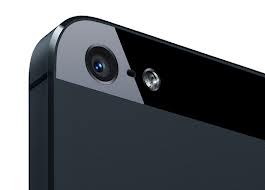In the rivalry between digital-camera and smartphone-camera shooting, traditionalists like to say that you still need a digital SLR and Photoshop for certain kinds of effects, such as splash color, tilt shift, and other advanced tricks that were generally impossible to do natively on a phone.
Well, so much for that argument. Thanks to an assortment of clever iPhone apps, you can now achieve all sorts of eye-popping effects that until recently required a high-end PC-based photo-editing package. Here’s a roundup of the coolest effects that you can achieve with an iPhone, and the apps that will make them possible.
Lytro-inspired adjustable focus
You might have heard about the Lytro camera. Like something out of science fiction, it takes pictures in which you can change focus after they’re taken. You just tap the background, for instance, and it snaps into focus. Tap the foreground, and that comes into focus, blurring the background again.
With FocusTwist, though, you can get essentially the same effect with your iPhone for $2. Instead of taking one photo, which captures many focal points simultaneously (like the Lytro does), FocusTwist takes a series of photos, each with a different focus, over several seconds–so you’ll need to steady the phone against something for the best results. You can then tap around within the image on the screen to see different perspectives of the same scene. You can share the photos as well–the images are hosted on FocusTwist’s website, where the image viewer lets people play with the focus on their own (it works best in Firefox and Chrome).
Splash color
Now something of a photographic trope, splash color photos are strangely compelling. Any time you see a photo that’s mostly black and white with just one element in full color– imagine a bright red apple sitting in a still life photo that’s otherwise a completely de-saturated gray–that’s splash color. In olden times, creating such a scene required painstaking work with Photoshop layers and masks. Now, you can do it in seconds on your phone.
One of the best splash color apps is called, appropriately enough, Color Splash ($1). You can open a photo from your camera roll or shoot a new image within the app. The photo appears entirely in gray, and you can use an adjustable brush to indicate where you want to add the color back in. It’s easy to do and the results are far better than you’d expect from a smartphone app.
Miniature-like Tilt Shift
Tilt shift gets its name from the fancy, articulated lenses used by pros to change the perspective in a photo. Using a tilt shift lens, you can make an ordinary scene look like it’s a miniature–homes becomes dollhouses, vehicles become toys–thanks largely to the unusual depth of field these lenses produce.
You can now reproduce this crazy effect on your iPhone. Take TiltShift, for example: This $2 app lets you take a photo–or open one from your camera roll–and fiddle with its depth of field by positioning bands of blur and sharpness. That might sound confusing, but it’s quite simple to do, and the app comes with a slew of excellent demo photos to help you master the technique for turning any scene into a faux miniature.
High Dynamic Range
HDR photos have become trendy in the last few years. It all started when photo enthusiasts realized they could take multiple photos of the same scene, each one with a different exposure, and combine them in a photo-editing program to yield an eye-popping shot packed with color that would otherwise impossible to achieve with either film or digital cameras. Then advanced digital cameras started offering built-in HDR modes. And now, even the iPhone has an HDR mode baked in: Just tap Options in the Camera app and turn on HDR to try it for yourself.
The iPhone’s HDR mode isn’t great, though; it doesn’t take a series of distinct images in the traditional way, so its results tend to be mediocre. For truly impressive HDR shots, try an app like the $2 Pro HDR. This excellent app takes two photos–one overexposed, one underexposed–and combines them into an image rich in color and detail. The whole process takes nearly 30 seconds from the moment you tap the screen to start the exposure, but the results are worth it.
Levitating subjects
Some special effects are somewhat…specialized. Consider levitation, for example: If you want to take a photo of a person floating in the air, there’s no app for that, right? You have to take a photo and painstakingly tweak it in Photoshop until it looks magical. Except that there actually is an app for that.
Levitagram is a $2 app that makes levitating anyone or anything a snap. Use the app to take two photos of the same scene–one with the “floating” subject propped in the air and another with the subject removed. To make yourself float, for example, you could sit on a box and then use the app to erase the box with a few finger swipes. There you’ll have it–a seamless levitation photo.





